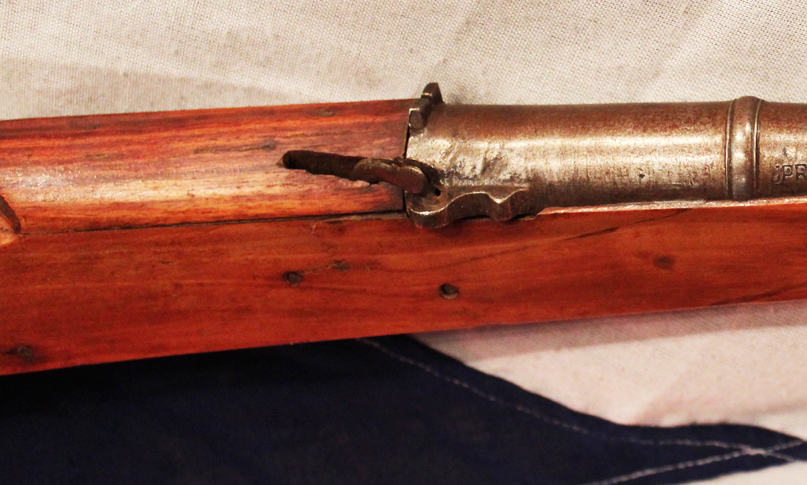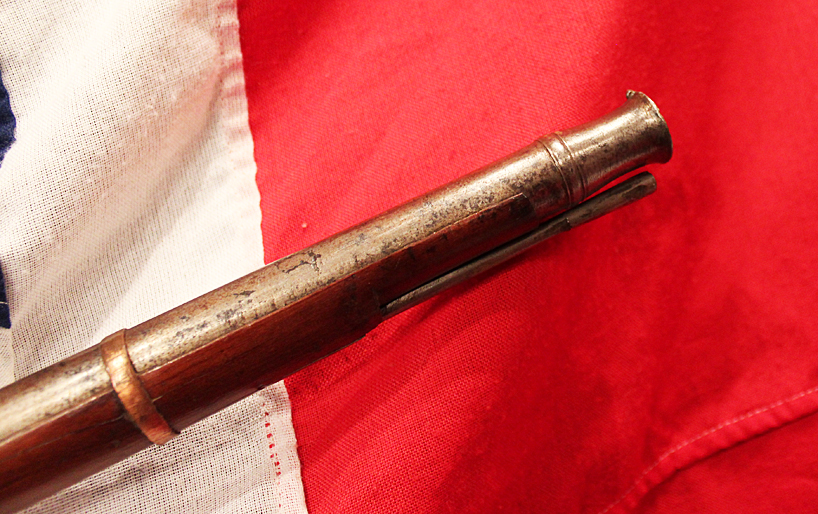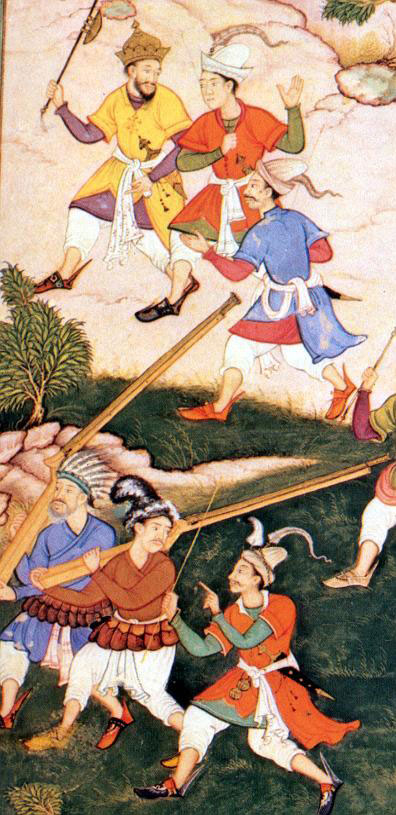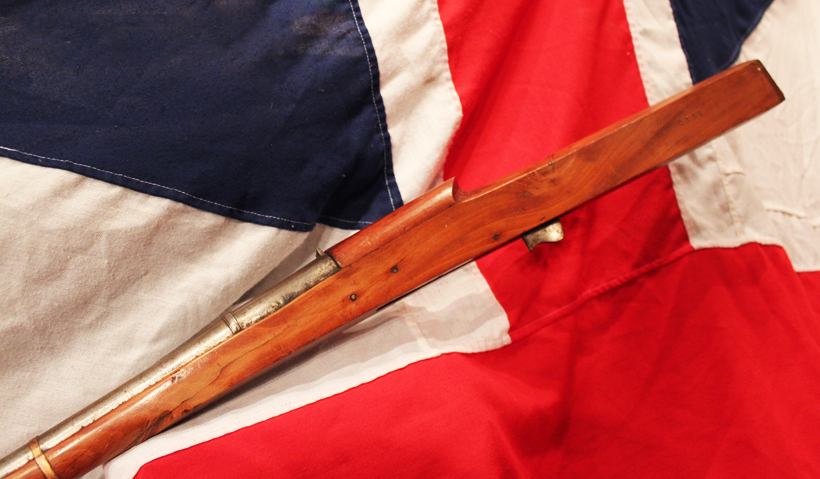A Good 18th Century Indian Arquebus Matchlock, From Tippu Sultan Campaign Fought by General Wellington Before His Victory over Napoleon
From the army of Tippu Sultan, the Tiger of Mysore. A most superior example, as some of their kind used in the Sultan’s 18th century army were rather utilitarian and of basic martial quality, but this example is of much superior grade. Superb stock with very fine patina, good multi staged barrel. Action linkage not connected. Bears a storage stamp for the armoury of the Maharajah of Jaipur.
During the time when this musket was being used against the British, Wellington’s army were equipped and using the famous British ‘Brown Bess’ musket. This would make a superb, original historical companion piece for an owner of a Brown Bess musket. See, for example, our sergeants length ‘Brown Bess’ musket, item number 23209, that also came from the former Dennis Ottrey Collection
Wellington was a 30-year-old army general when he led troops to Mysore in the late 18th century.
Then a young Arthur Wellesley, he earned his stripes and learned skills fighting Tipu, nicknamed the Tiger of Mysore, that would later prove vital in defeating French dictator Napoleon on the battlefields of Waterloo.
His elder brother Richard Wellesley, the British Governor General, had waged war against the sultan after a spy intercepted a letter from Napoleon proposing an alliance.
It was to be the fourth war between the Brits and the southern Indian kingdom of Mysore in just over 30 years.
Wellesley led the British army into Tipu's stronghold of Seringapatam, the capital of Mysore, on April 5 1799 with the military planning and precision that came to be his strongest attributes.
More than two decades letter Wellesley, by then the Duke of Wellington, used the same skills he had learned against Tipu Sultan to crush Napoleon at the Battle of Waterloo.
After several weeks of besieging the city the Brits were able to breach the walls of its fortress. Tipu Sultan was shot and killed in the onslaught, and Wellesley dashed to the scene to check his pulse. Wellington went on to become one of the most famed leaders in military history.
In the early 16th century, the term "arquebus" had a confusing variety of meanings. Some writers used it to denote any matchlock shoulder gun, referring to light versions as caliver and heavier pieces fired from a fork rest as musket. Others treated the arquebus and caliver synonymously, both referring to the lighter, forkless shoulder-fired matchlock. As the 16th century progressed, the term arquebus came to be clearly reserved for the lighter forkless weapon. When the wheel lock was introduced, wheel-lock shoulder arms came to be called arquebuses, while lighter, forkless matchlock and flintlock shoulder weapons continued to be called calivers. In the mid-17th century, the light flintlock versions came to be called fusils or fuzees. The first usage of the arquebus in large numbers was in Hungary under king Matthias Corvinus (r. 1458?1490). Every fourth soldier in the Black Army had an arquebus in the infantry, and every fifth regarding the whole army, which was an unusual ratio at the time. Although they were generally present in the battlefield King Mathias preferred enlisting shielded men instead, as the arquebus had a low rate of fire. Even a decade after the disbandment of the Black Army, by the turn of the 16th century, only around 10% of the soldiers of Western European armies used firearms. Arquebusiers were effective against cavalry and even other infantry, particularly when placed with pikemen in the pike and shot formation, which revolutionised the Spanish military. An example of where this formation was used and succeeded is the decisive Battle of Cerignola (1503), which was one of the first battles to utilise this formation, and was the first battle to be won through the use of gunpowder-based small arms.
Provenance; This fine arquebus musket came originally from the former Leslie Rawlings collection, who purchased it directly from the Maharajah of Jaipur’s private family armoury in the 1970’s, and thence subsequently acquired by us from the former Dennis Ottrey collection, a late and well known local Sussex engineer and gun collector restorer. It bears the storage markings of the Maharajah’s personal armoury upon the barrel
76 inches long,
Code: 19066







